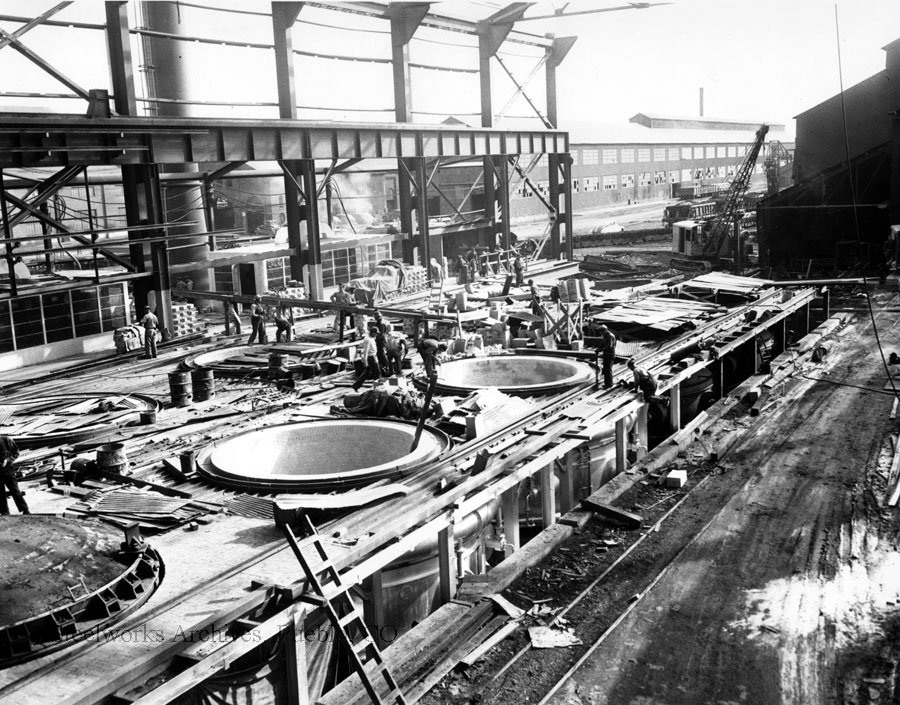This page was created by Blake Hatton.
Blast Furnace
The blast furnaces were the first step in creating the steel that CF&I used to build the west. CF&I used four blast furnaces, all of which were torn down beginning in the 1980s to make way for more efficient steel making processes.
First, the furnace, which is lined with refractory brick designed to withstand high temperatures, is heated to temperatures up to 2300 degrees Fahrenheit and is kept at this heat continuously for years, stopping only for maintenance. Hot air is blown into the furnace from the bottom to maintain this temperature. Then iron ore, limestone, and coke (a purified carbon fuel derived from bituminous coal) were dumped into the top of the blast furnace by a skip car. This mixture of materials takes up to 8 hours to reach the bottom of the blast furnace, where the intense temperatures ignite the coke and melt the limestone and iron ore. The limestone serves to remove impurities from the iron, forming a mixture known as slag. The slag separates from the molten iron, forming a layer that floats on top of the iron. The slag is separated from the steel and is taken elsewhere to be dumped. The molten iron is then drained into ladles or "torpedo cars", where the molten iron is transported elsewhere in the mill to be turned into steel products.
The four large cylindrical structures located near the blast furnace served to control the flow of air to and from the furnace. Known as "stoves", one vented dirty air from the furnace, another heated air for the furnace, and still another supplied this air. Today, the blast furnaces have been torn down, and their stoves are all that remain.
From here, we can go to the rail mill, the pattern shop, or back to the tunnel.

